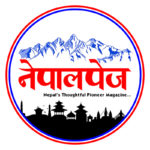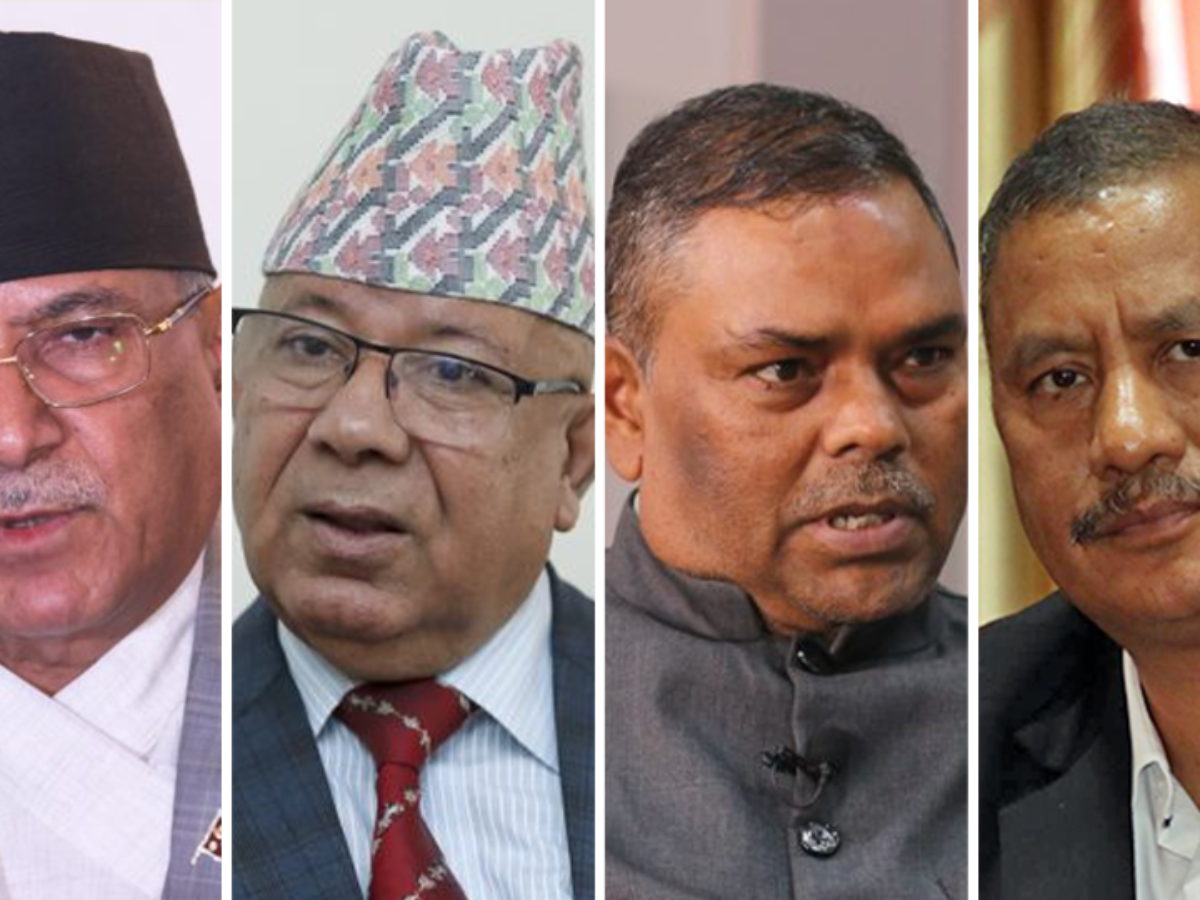Kathmandu, NP comment : The Socialist Front, consisting of four parties, including the Nepal Communist Party (Maoist Center) and the Janata Samajwadi Party, has been formed, including the Nepal Communist Party (Unified Socialist) as a unified socialist alliance. The leaders of this front have stated that the purpose of this alliance is to establish socialism with Nepali characteristics.
The formation of the Socialist Front has been a long-awaited process for the leaders, spanning more than two years. The initial initiative to form this front began in 077 (current Nepali year) after the dissolution of the former Nepal Communist Party and the split between the Nepal Communist Party (UML) and the Maoist Center. The concept of the front had emerged even before the Supreme Court’s decision to separate Pushpa Kamal Dahal “Prachanda” and Madhav Kumar Nepal from the group led by K.P. Sharma Oli.
At that time, Prachanda had proposed the formation of a Left Front, but as Prachanda was leading the Maoist Center, while Madhav Nepal had formed the Unified Socialist party, there were various efforts made by Maoist and Unified Socialist leaders to reach a consensus and initiate the formation of the front.
During the same period, efforts were also made to bring unity among the Maoist splinter parties. However, unity among the former Maoist factions was not possible, nor was there a merger with the front. Eventually, the formation of the Socialist Front, including the Unified Socialist, JSP, and NCP led by Netra Bikram Chand, was successful under the leadership of Prime Minister Prachanda.
The top leaders of the four parties have prepared a 15-point commitment within the front. The leadership and operational system of the front have also been discussed, ensuring that there will be no activities contrary to the objectives of the front, including allegations of leadership being in the dark.
Chairperson Oli, not only considered the formation of the front unnecessary but also made a comment criticizing the Congress for seeking an alliance that does not go beyond forming a coalition. “The idea of forming the Socialist Front is not just to compete with the UML or target the Congress,” Oli said. “There are two reasons for forming the Socialist Front: to compete with the UML and challenge the Congress.”
The Chairman of the Unified Socialist Party, Nepal, said that the formation of the front is driven by a noble motive. “We have brought the idea of this front based on the belief that all forces that are willing to establish socialism by uniting their strengths should come together,” Nepal said. “We will bring the supporting factions together.”
The Maoist Center, JSP, and Unified Socialist have their power within the parliamentary system, while Chand’s NCP is outside the parliament. The decision to dissolve the parliament made by Oli in 5 Poush 077 (December 20, 2020) and the reference to the parliamentary dissolution have become the basis for the possibility of unity among these three forces, including the Congress-led alliance.
Looking at the calculations of the parliament, Prachanda, Madhav, and Upendra Yadav were seated in a single row, and the possibility of a Congress-led alliance was also there.
When forming the front, Prachanda will naturally benefit from this calculation. As the Maoist Center is the largest party among the Maoist factions, and currently holds the leadership of the government, the front will be advantageous to Prachanda.
However, Chand and his party do not agree with the parliamentary system. Unlike these three powerful forces, he does not consider himself a communist. The leader of the Unified Socialist, Jhalanath Khanal, raised
Safe landing of Biplav
Expressing dissatisfaction with Prime Minister Prachanda’s trip and the peace agreement, Chand has formed his own party under his leadership. In this faction, Krishna Bahadur Mahara, the deputy chairman of the Maoist center, has joined under Chand’s leadership.
Prior to this announcement, discussions had taken place regarding the unity of various factions, including the revolutionary Maoists led by Chand, the unified Maoists led by Mohan Vaidya, and the Maoists led by Gopal Kirant. However, it is evident that the Maoist leadership and Chand prioritize the faction over the unity of the former Maoists.
According to sources, Chand’s faction may eventually merge with the Maoists. There seems to be a convergence of self-interests in this matter. Prachanda has placed priority on maintaining party unity by involving Chand and Janardan Sharma from within the Maoists and the current power struggle.
It is speculated that this option of resolving his political crisis is suitable for Chand as well, as the party formed with the goal of a unified revolution is currently not in a stable state.
Chand’s party, which agreed with the government to halt the insurgency in Falgun [February], has been in a dilemma whether to participate or not participate in local elections. This matter arose only last year. Dharmendra Bastola and Sudarshan Wali, who formed a majority with the support of the NCP after the party split, have unified with Mohan Vaidya. Candidates who participated in the local elections with Chand’s support were unable to win. Therefore, it is observed that Chand has decided to join the faction, including the Maoist Center, once again.




COMMENTS